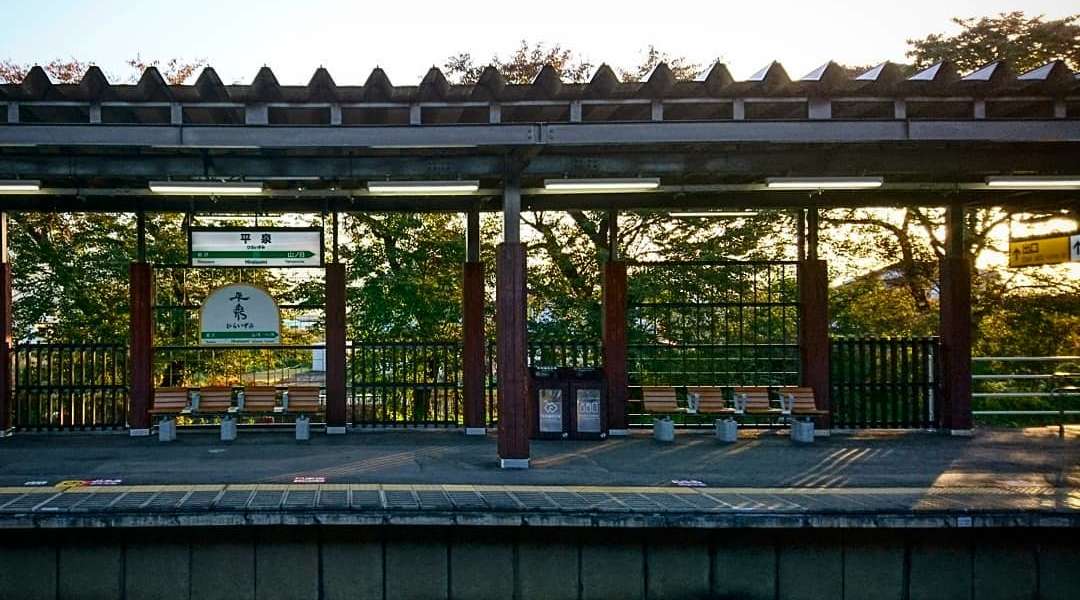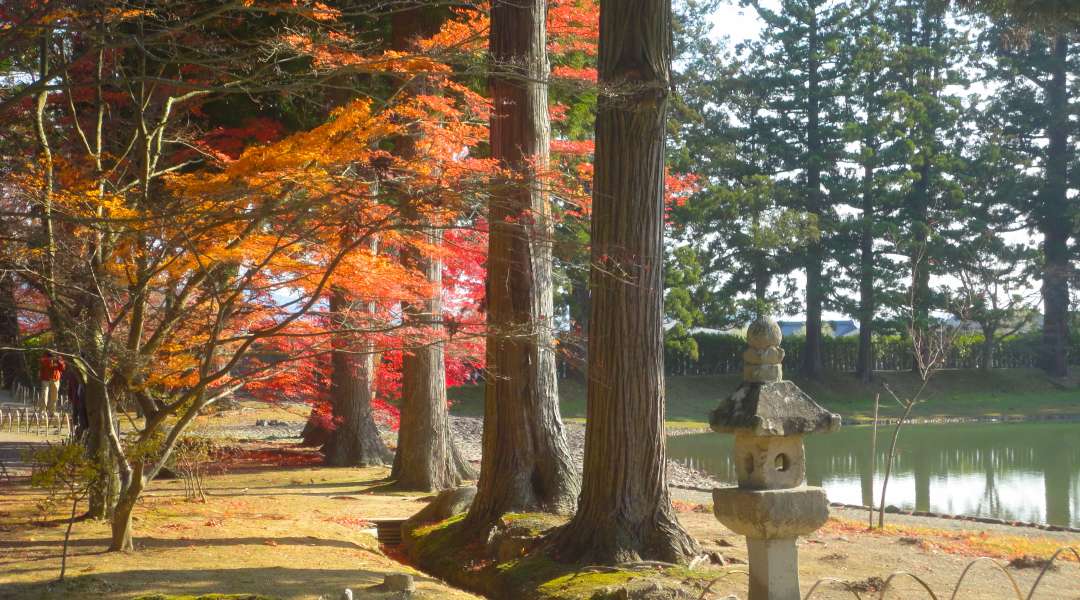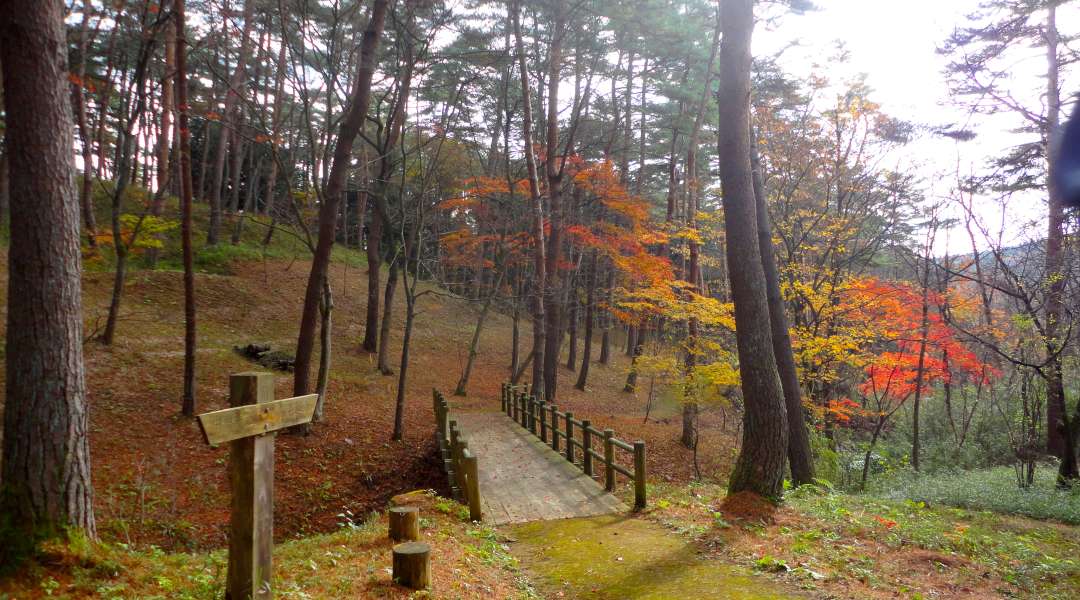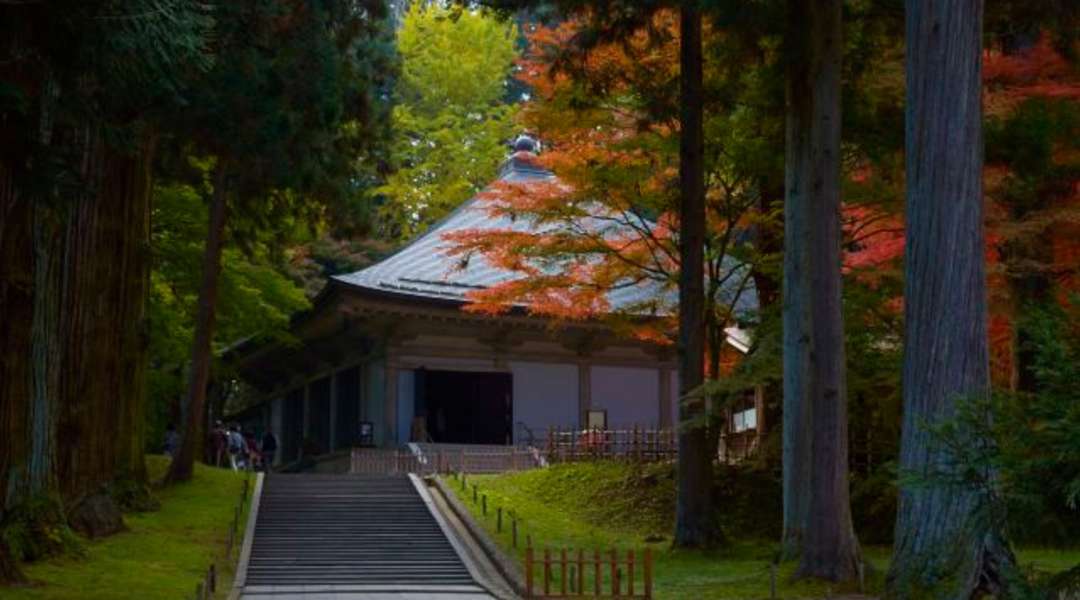
Long before a high speed bullet train line made travel much simpler, Japan's rural north was shrouded in mystery and often fear in the eyes the upper class courtiers of central Japan. The region still retains much of that enigmatic allure to this day, with its rustic architecture, long-held customs and rich folklore traditions but one city was historically considered a centre of civilisation in the north - the UNESCO World Heritage site of Hiraizumi. Before working at Japan House London, Steph Marley was in Fukushima Prefecture from 2011-2013 where she caught the bug for premodern Japanese poetry and the history of Tohoku. One master's degree from SOAS and a whole lot of travel writing later, she talks us through why the "Mirror of Kyoto" should be on everybody's bucket list.
“The summer grasses –
of brave soldiers' dreams
the aftermath.”
- Matsuo Basho, Oku no Hosomichi (The Narrow Road to Oku, trans. Donald Keene)
Take a two-and-a-half-hour train back in time and 380 km north from Tokyo and you’ll find a dazzling city hidden in Tohoku's Iwate Prefecture - Hiraizumi. This city, also known as ‘The Mirror of Kyoto’, is one of the most important political, cultural and religious sites to visit in the country.

Before moving to Fukushima Prefecture in 2011, I'd been reading up on premodern Japanese literature and history that featured or was written in places around Tohoku. Building a wish-list of everywhere I wanted to visit, Hiraizumi was at the top. Transience was a popular theme in premodern courtly literature, and Hiraizumi's story of brief grandeur caught the imagination of many writers I wanted to follow in the footsteps of.
With its centuries-old ruins and relics scattered and rebuilt throughout the city; its scenery, architecture, craft and literature; there's plenty in and around Hiraizumi to keep a visitor who's hunting for “Old Japan” engrossed.

A Courtly Capital in the ‘Barbaric’ Wilds
Soon after its establishment in the 10th century, Hiraizumi was one of the most powerful Buddhist and cultural centres in Japan. However, unlike other cities established on behalf of the emperor in the Heian period (974-1192), it was situated deep in the 'barbaric wilderness' of Michinoku (today's Tohoku).
Over the centuries before, the Yayoi Japanese who ruled from courts in central Japan had been colonising Michinoku, the home of the Emishi and Ainu (two of Japan's indigenous peoples). Only exile would take a courtier that far away from court – which, poetry from the period tells us, was akin to cultural and societal death.
While Hiraizumi was a stamp of courtly authority in the north, however, its founder Fujiwara Kiyohira of the powerful Northern Branch of the Fujiwara clan, was half Emishi himself…

The Fall of Hiraizumi
But Hiraizumi's glory wasn't to last. Only four generations after Kiyohira established the city, Minamoto no Yoritomo became Japan’s first shogun and razed Hiraizumi to the ground, burning its powerful temples and beheading the fourth Fujiwara ruler.
Nonetheless, in the centuries after the city's fall, various historical figures still sought it out, including the haiku poet Basho Matsuo, who wrote of his grief for the lost city in Oku no Hosomichi – ('The Narrow Road to Oku'). Such poems and stories in national folklore have kept the lost Mirror of Kyoto alive in the public imagination and inspired many to visit. So much so, that temples have been rebuilt and treasures restored for its visitors today.

What to see
Sitting among soaring mountain passes and gorges that have long cut off easy access to Iwate from elsewhere in Japan, towns and villages in the prefecture have kept alive their local folklore and customs. This, along with their agricultural, architectural, and crafting traditions that date back centuries, has long drawn associations of Iwate prefecture with “Old Japan”.
Hiraizumi itself hosts a network of Buddhist temples, Shinto shrines, and ruins of both that dot the city's steep hills, peeking out from behind leaf clouds of vermilion and burnt orange in the autumn, or luscious green in the summer.
Two partly restored temple complexes, Motsu-ji and Chuson-ji, have kept some shards of the city's mirror, offering visitors a snatched reflection of its past through their renovated buildings, treasures and festivals.

Motsu-ji: Gardens and Celebrations
Dating back to 850 C.E. and once the largest temple complex in all of Japan, Motsu-ji is only a short walk away from Hiraizumi's train station. While not many of its 40 halls have survived beyond their foundation stones, the temple's 850-year-old Jōdo Garden is one of Japan's grandest gardens of its kind and is a designated Special Historic Site and Special Site of Scenic Beauty. The wide, shallow waters and abrupt standing stones that make its central pond (Oizumi ga Ike) mimic the rocky coast of Iwate Prefecture in miniature. The acer trees, a monument to Basho's haiku, and the stone lanterns surrounding its small shores encapsulate the very best of Pure Land design.

Motsu-ji also has a rich calendar of festivals throughout the year that celebrates different rites, rituals and cultural practices of the Heian period.
Hatsukyasai Festival – New Year Rites (January)
A procession of male torch bearers walks through the snow towards Jogyodo Hall – a thatch-roofed structure restored in 1732 in honour of Amida, the Buddha of Infinite Light, and Matara-jin, Motsu-ji's primary god – to fulfil their wishes for the year ahead.
Ennen no Mai Longevity Rites – dance (January)
These longevity celebrations are a series of dances, made in offering to the gods, that pre-date even Noh theatre. Performed with masks, music and costumes, this festival has been designated an Important Intangible Folk Cultural Property of Japan.
Gokusui no En festival – poetry (May)
During Hiraizumi's golden age, Heian-period courtiers held poetry contests along a feeder stream of Oizumi no Ike, while racing to compose a waka poem before a sake cup floating down the stream reached them. This tradition is celebrated every May the 4th, where participants dressed in period clothing take on the challenge, accompanied by music and choreography.
Iris Festival and Bush Clover Festival – flowers (June – September)
Botanists will enjoy Motsu-ji's two flower festivals – Bush Clover Festival, celebrated from mid- to late-September, and the Iris Festival, celebrated from late June to early July – when these flowers adorn the grounds in their thousands. Tea ceremonies and music accompany flower viewings.

Chuson-ji: Tombs and Treasures
Another relic to Hiraizumi's past splendour is Chuson-ji, only a short walk from Motsu-ji.
Hugged by the curling Koromo River (a famous battle-site of the eleventh century, where Ainu warriors finally lost to Yayoi Japanese soldiers), Chuson-ji hosts Japan's first National Treasure: the glimmering Konjiki-do (Golden Pavillion). Its inner hall, covered in gold leaf, mother of pearl, lacquer and Okinawan shells, is breath taking. Nearby, one of the oldest Noh theatres still boasts a thatched roof and hosts two annual Noh performances (20 January and 4 August) in commemoration to the city’s fallen Fujiwara lords.


What to buy
Visitors looking for a Mirror of Kyoto memento should head to the 800-year-old Hidehira-nuri lacquerware factory and shop. This lacquerware is famous across Japan, and distinct in style and crafting technique. Bowls, trays and flower vases are made from Japanese zelkova or horse chestnut wood and layered with lacquer (tree sap) to produce a signature vermillion, gold and black design. They are adorned with motifs found in Heian-period e-maki (scroll pictures), such as the gumo (gold clouds) that represent the Palace in the Heavens of the Heian court, alluding to Hiraizumi's origins.
How to get there
For those visitors who want the best of both worlds – quiet, remote towns and the best of Japanese premodern culture – Hiraizumi has it all. Reach the city by shinkansen or train from Tokyo to Ichinoseki, where another trainline, bus or taxi will take you to Hiraizumi station.
When to go
Hiraizumi is a year-round destination but try autumn – the momiji leaves are stunning.
Where to stay
Ichinoseki houses several inns and places to stay, but you can also choose one of Iwate's famed magariya farmhouses.



























































